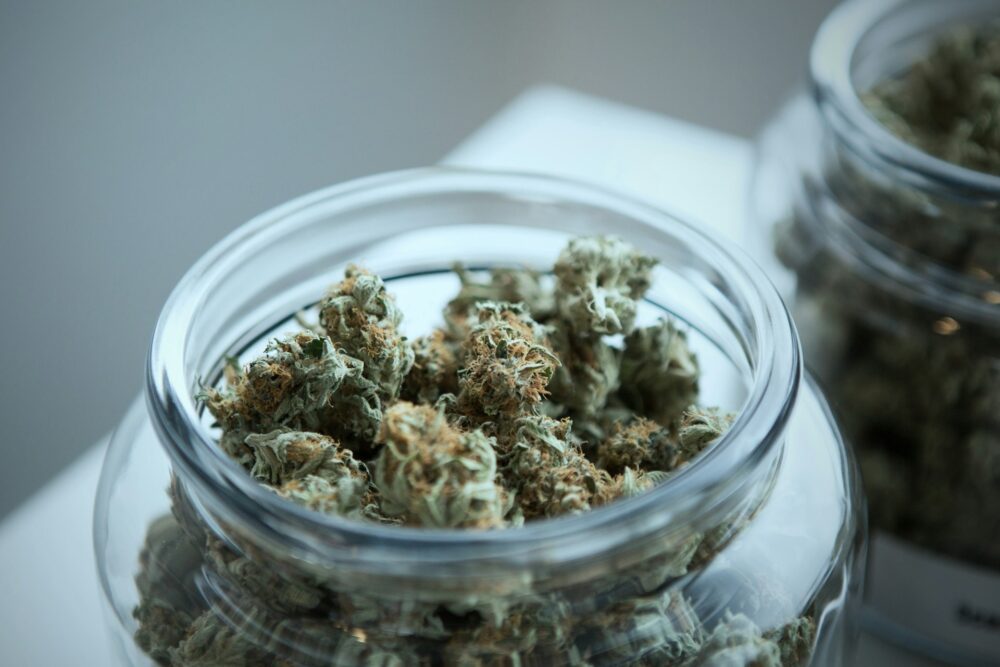Cannabis
Scientists Discover CsMIKC1 Gene That Could Increase Hemp Production By Up To 50%
Scientists at Nanjing Agricultural University discovered the CsMIKC1 gene, which influences cannabis plant bud and seed production. Overexpression of the gene boosts yields, while underexpression reduces growth. Using CRISPR-Cas9 and ethylene hormone, researchers enhanced flowering and seed output. This breakthrough could revolutionize cannabis cultivation by optimizing yields, potentially creating more efficient, high-yield strains.

Chinese scientists have made a breakthrough in cannabis genetics that could significantly impact the future of cannabis cultivation. Their research has revealed that a specific gene, called CsMIKC1, plays a key role in increasing the number of flowers and seeds, which translates into higher yields. The results of this research could open up new opportunities for cannabis growers in both the medical and recreational industries.
CsMIKC1 Gene Discovery – Key to Greater Efficiency
Scientists from the Academy of Sciences of Nanjing Agricultural University (NJAU) state in their publication in the scientific journal Oxford Academic Horticulture Research that they have discovered a key gene that directly affects the number of buds and seed production of cannabis plants.
A team of researchers from Nanjing Agricultural University (NJAU) has identified the CsMIKC1 gene as a central element that affects the development of the cannabis plant during the flowering phase. When this gene is more active (overexpression), the plant produces more inflorescences, leading to a larger harvest. On the other hand, reducing its activity (underexpression) inhibits the development of the plant, resulting in fewer flowers and seeds.
Studies show that plants in which the CsMIKC1 gene was more active had significantly higher yields compared to plants in which the gene was less active. This is a significant step forward in understanding how genetics can affect the efficiency of cannabis production.
Scientists used the modern genetic manipulation technology CRISPR-Cas9, which allows for precise changes in genes. Thanks to this technology, they could control the expression of the CsMIKC1 gene and observe how it affects plant development. It turned out that increasing the activity of this gene leads to a significant improvement in the production of inflorescences and seeds.
Interestingly, the team found that CsMIKC1 gene expression can also be regulated by the plant hormone ethylene. Ethylene is naturally present in fruits such as bananas and apples and has the ability to accelerate the ripening process. In the study, adding ethylene to the plants increased flower production in the final stages of flowering. It’s a simple but effective solution that growers may already be familiar with – some of them use ripe bananas in their crops to speed up flowering.
Research results – more flowers and seeds
The results of the study clearly show that manipulating the CsMIKC1 gene brings tangible benefits. Plants that overexpressed this gene produced significantly more flowers and seeds, which is important from both a commercial and research perspective. In turn, plants underexpressing this gene had poorer development, which confirms the key role of CsMIKC1 in flowering processes.
The researchers noted that their discovery could have huge implications for the hemp industry. Hemp farmers can now use genetic manipulation to optimize yields, which could ultimately lead to the creation of new, more efficient plant varieties.
Protein interactions and regulation of production
In addition to the CsMIKC1 gene itself, researchers also identified two proteins that interact with this gene – CsBPC2 and CsVIP3. These proteins play a key role in regulating flower and seed production. Manipulating the expression of the CsMIKC1 gene also affected the activity of these proteins, which directly translated into increased yields.
This discovery not only deepens our understanding of genetic processes in plants, but also opens up new possibilities for crop manipulation. Cannabis growers can use this knowledge in the future to increase the yield of their plants, both for medical and recreational purposes.
Ethylene – the secret to faster flowering?
Studies show that ethylene, already known to growers to speed up fruit ripening, can also be an effective tool for increasing cannabis production. Adding the hormone to the plant at the end of the flowering stage speeds up flower development, leading to larger yields.
This knowledge could be particularly useful for hemp farmers looking for ways to maximize production while reducing cultivation time. In the future, ethylene could become a standard element in the hemp breeding process, as it already is for other crops.
The Future – Highly Productive Hemp Strains?
According to scientists, the discovery of the CsMIKC1 gene could be the first step in developing new, more efficient cannabis varieties. Dr. Jianguang Su, one of the study’s authors, emphasizes that the discovery has broad implications for the cannabis industry.
” This gene is key to the performance of a given cannabis strain. Its discovery has a huge impact on both medical and industrial production. Through genetic manipulation, we can create precise solutions that will optimize crops and increase the potential of the cannabis industry, ” says Dr. Su.
This research not only expands our knowledge of cannabis genetics, but also opens up exciting possibilities for creating high-yielding cannabis strains. This could be a real revolution in cannabis cultivation, especially in the context of the increasing legalization of cannabis worldwide.
The discovery of the CsMIKC1 gene is an important step forward in cannabis genetics. With this knowledge, growers can increase the yield of their crops, which is important for both medical and recreational production. Genetic manipulation, in combination with the hormone ethylene, provides new tools for optimizing yields and in the future may lead to the creation of cannabis varieties with even higher yields.
__
(Featured image by Budding . via Unsplash)
DISCLAIMER: This article was written by a third party contributor and does not reflect the opinion of Born2Invest, its management, staff or its associates. Please review our disclaimer for more information.
This article may include forward-looking statements. These forward-looking statements generally are identified by the words “believe,” “project,” “estimate,” “become,” “plan,” “will,” and similar expressions. These forward-looking statements involve known and unknown risks as well as uncertainties, including those discussed in the following cautionary statements and elsewhere in this article and on this site. Although the Company may believe that its expectations are based on reasonable assumptions, the actual results that the Company may achieve may differ materially from any forward-looking statements, which reflect the opinions of the management of the Company only as of the date hereof. Additionally, please make sure to read these important disclosures.
First published in FaktyKonopne. A third-party contributor translated and adapted the article from the original. In case of discrepancy, the original will prevail.
Although we made reasonable efforts to provide accurate translations, some parts may be incorrect. Born2Invest assumes no responsibility for errors, omissions or ambiguities in the translations provided on this website. Any person or entity relying on translated content does so at their own risk. Born2Invest is not responsible for losses caused by such reliance on the accuracy or reliability of translated information. If you wish to report an error or inaccuracy in the translation, we encourage you to contact us

-

 Markets1 week ago
Markets1 week agoSugar Markets Cautious Amid Surplus Outlook and Steady Demand
-

 Crypto3 days ago
Crypto3 days agoEthereum Momentum Builds as Bitcoin Rallies and Trilemma Claims Emerge
-

 Crowdfunding1 week ago
Crowdfunding1 week agoCrowdfunding Grants Open for Business Projects Until January 2026
-

 Biotech2 days ago
Biotech2 days agoHaptena Therapeutics Launches with €3 Million Funding to Target KRAS-Mutated Tumors

















